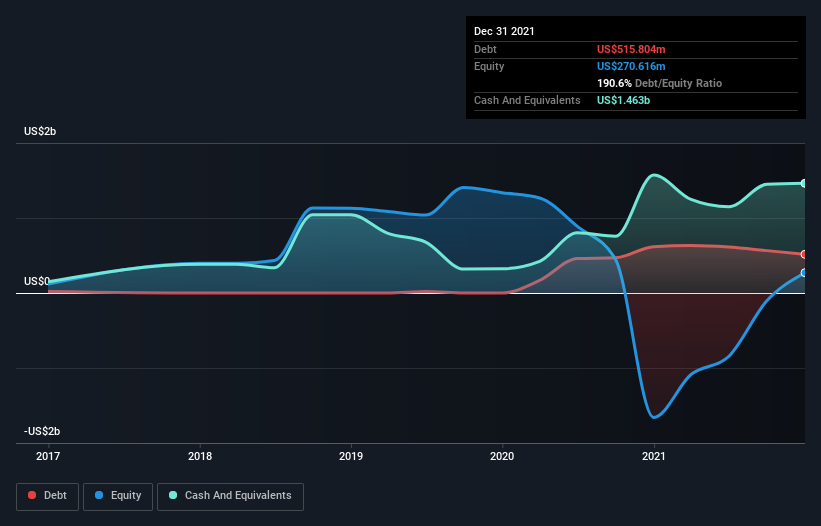Is Farfetch (NYSE:FTCH) Weighed On By Its Debt Load?
Some say volatility, rather than debt, is the best way to think about risk as an investor, but Warren Buffett famously said that 'Volatility is far from synonymous with risk.' So it might be obvious that you need to consider debt, when you think about how risky any given stock is, because too much debt can sink a company. As with many other companies Farfetch Limited (NYSE:FTCH) makes use of debt. But is this debt a concern to shareholders?
Why Does Debt Bring Risk?
Debt is a tool to help businesses grow, but if a business is incapable of paying off its lenders, then it exists at their mercy. Ultimately, if the company can't fulfill its legal obligations to repay debt, shareholders could walk away with nothing. However, a more usual (but still expensive) situation is where a company must dilute shareholders at a cheap share price simply to get debt under control. Of course, debt can be an important tool in businesses, particularly capital heavy businesses. When we examine debt levels, we first consider both cash and debt levels, together.
See our latest analysis for Farfetch
What Is Farfetch's Debt?
As you can see below, Farfetch had US$515.8m of debt at December 2021, down from US$617.8m a year prior. However, its balance sheet shows it holds US$1.46b in cash, so it actually has US$947.3m net cash.
A Look At Farfetch's Liabilities
The latest balance sheet data shows that Farfetch had liabilities of US$907.3m due within a year, and liabilities of US$2.65b falling due after that. Offsetting these obligations, it had cash of US$1.46b as well as receivables valued at US$365.2m due within 12 months. So its liabilities outweigh the sum of its cash and (near-term) receivables by US$1.73b.
This deficit isn't so bad because Farfetch is worth US$4.65b, and thus could probably raise enough capital to shore up its balance sheet, if the need arose. However, it is still worthwhile taking a close look at its ability to pay off debt. Despite its noteworthy liabilities, Farfetch boasts net cash, so it's fair to say it does not have a heavy debt load! There's no doubt that we learn most about debt from the balance sheet. But it is future earnings, more than anything, that will determine Farfetch's ability to maintain a healthy balance sheet going forward. So if you're focused on the future you can check out this free report showing analyst profit forecasts.
In the last year Farfetch wasn't profitable at an EBIT level, but managed to grow its revenue by 35%, to US$2.3b. Shareholders probably have their fingers crossed that it can grow its way to profits.
So How Risky Is Farfetch?
While Farfetch lost money on an earnings before interest and tax (EBIT) level, it actually booked a paper profit of US$1.5b. So taking that on face value, and considering the cash, we don't think its very risky in the near term. One positive is that Farfetch is growing revenue apace, which makes it easier to sell a growth story and raise capital if need be. But we still think it's somewhat risky. The balance sheet is clearly the area to focus on when you are analysing debt. But ultimately, every company can contain risks that exist outside of the balance sheet. For instance, we've identified 3 warning signs for Farfetch (1 shouldn't be ignored) you should be aware of.
If you're interested in investing in businesses that can grow profits without the burden of debt, then check out this free list of growing businesses that have net cash on the balance sheet.
Have feedback on this article? Concerned about the content? Get in touch with us directly. Alternatively, email editorial-team (at) simplywallst.com.
This article by Simply Wall St is general in nature. We provide commentary based on historical data and analyst forecasts only using an unbiased methodology and our articles are not intended to be financial advice. It does not constitute a recommendation to buy or sell any stock, and does not take account of your objectives, or your financial situation. We aim to bring you long-term focused analysis driven by fundamental data. Note that our analysis may not factor in the latest price-sensitive company announcements or qualitative material. Simply Wall St has no position in any stocks mentioned.

 Yahoo Finance
Yahoo Finance 
